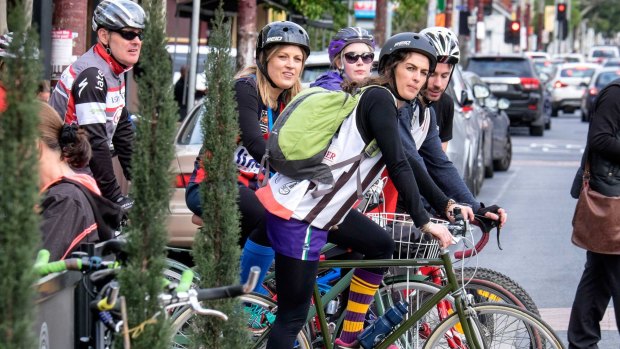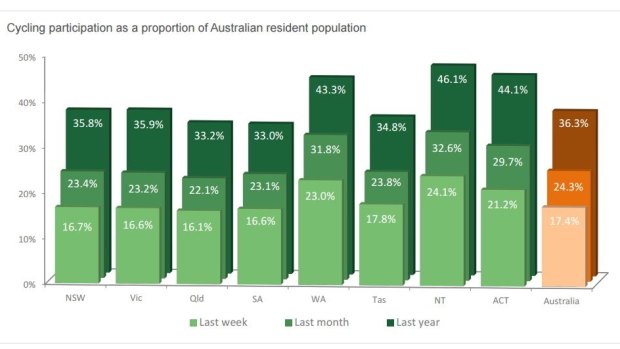By Melanie Kembrey
With all that Lycra and all those GoPros, cyclists can seem a mysterious bunch to some. But the 2015 National Cycling Participation Survey, commissioned by the Australian Bicycle Council and repeated biennially since 2011, has shed fresh light on the riders of Australia.
More than 8000 households containing 20,879 men, women and children were surveyed. Here's what the results revealed.

Rolling on: a survey has revealed the states where cycling is most popular.
The states with the most cyclists
The cycling participation rates in Western Australia, the Northern Territory and the ACT are the highest and significantly above the Australian average. The Top End leads the way with 24.1 per cent of residents – 59,000 – embracing pedal power each week and almost half of residents – 113,000 – doing so each year.
In NSW the figure has remained fairly stable in the four years to 2015. About 1.25 million residents cycle each week (16.7 per cent) and 2.70 million residents (35.8 per cent) ride at least once a year. Of cyclists aged over 15 who had ridden in the past year, 70 per cent said better connections between bike paths and schools was either a high or very high priority.

According to the survey, more than 4 million people across the country ride a bike each week.
Why we get on our bikes
An increasing number are riding for pleasure compared to four years ago, according to the survey. Of those who had cycled in the previous month, about 85.5 per cent did so for recreation, compared with 30.2 per cent who did so for transport (with some respondents listing both). In NSW, those who had ridden in the past year had done so at least once for recreation or exercise, and more than half (57 per cent) had cycled for shopping.
The most keen riders
Young children, according to the survey, have the highest levels of cycling participation. Nearly half of children aged between two to nine ride a bike each week, but the number decreases to 37 per cent when it comes to children 10 and older. Men are also more likely to cycle, with 22 per cent riding each week compared to 13 per cent of women.
How long we spend riding
Nearly three hours – 2.75 hours, to be exact – was the average time spent cycling among those had ridden their bikes in the previous week. In NSW, the majority of riders older than 15 who had cycled in the past year felt that conditions for riding in their local area had not changed in the previous year (69 per cent), whereas 23 per cent felt they had improved and 8 per cent felt they had deteriorated.
There's something about regional NSW
Regional NSW may be where the real cycling aficionados are. Cycling participation in regional NSW is above the state and national average, with 22.6 per cent of residents riding each week. There's also a smaller difference between the number of men and women cycling, compared with Sydney and the country. Fifty seven per cent of households in regional NSW have access to a bike, while only 46 per cent of Sydney households do.
Cycling is on the wane
There has been a small but statistically significant decrease in the level of cycling participation across the country between 2011 and 2015, according to the survey. The National Cycling Strategy's intention of doubling the number of people cycling between 2011 and 2016 is "unlikely" to be achieved.
The downward trend in the number of cyclists is also likely to continue. "It is possible that the gradual ageing of the Australian population has contributed to the participation trend, and this may increase in future as the Australian population continues to age," the survey states. "The strong correlation between age and cycling participation means that over time, all else being equal, we would expect cycling participation to decline."